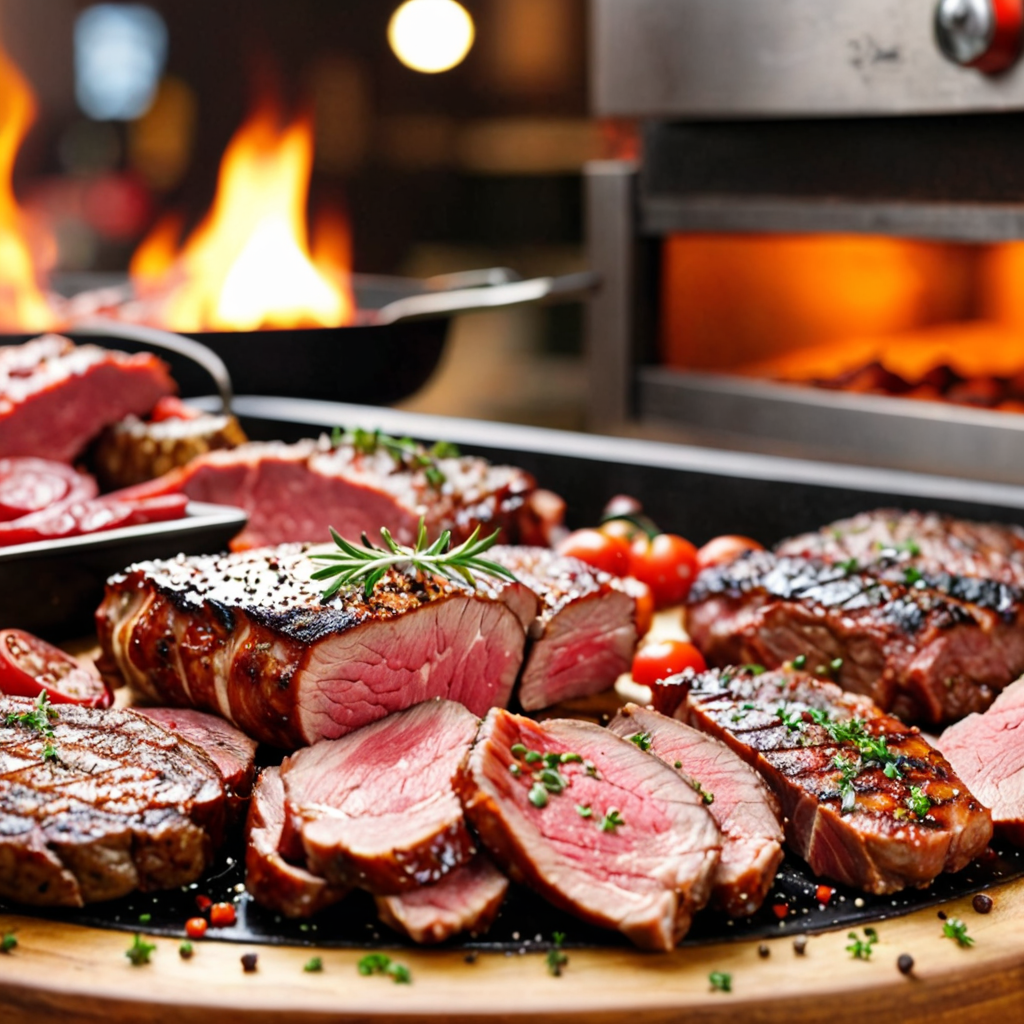
Discover the Art of Spanish Meat Cookery: A Culinary Journey through Spanish Cuisine
Cooking Meats in Spanish Cuisine
Spanish cuisine has a rich tradition of cooking meats in various flavorful and aromatic ways. Spaniards are known for their mastery of meat cookery, developing dishes that entice and delight the senses. Here’s a guide to cooking different meats in the authentic Spanish style.
1. Beef – “Carne de Res”
Beef is a staple in Spanish cooking, often used in hearty stews and as the star of grilled dishes. One popular beef dish is “Bistec a la Parrilla”, which is a succulent grilled beef steak seasoned with simple yet flavorful ingredients like garlic, olive oil, and sea salt.
2. Pork – “Carne de Cerdo”
Pork is widely embraced in Spanish cuisine, and dishes like “Cochinillo Asado” (roast suckling pig) and “Jamón Ibérico” (Iberian ham) are revered for their rich and savory flavors. Influenced by centuries-old traditions, Spanish pork dishes are often slow-cooked and marinated to perfection.
3. Lamb – “Cordero”
Lamb holds a special place in Spanish gastronomy, with dishes like “Cordero Asado” (roast lamb) and “Chuletillas de Cordero” (grilled lamb chops) showcasing the tender and succulent nature of this meat. Spaniards often use fragrant herbs and spices to enhance the natural taste of lamb.
4. Chicken – “Pollo”
Chicken dishes are prominent in Spanish cuisine, with the versatile meat featuring in countless recipes. From “Pollo al Ajillo” (garlic chicken) to “Pollo Asado” (roast chicken), the Spanish have perfected the art of infusing chicken with robust flavors and tender textures.
5. Seafood – “Mariscos”
While not a traditional “meat,” seafood is an integral part of Spanish cuisine. From succulent grilled prawns to rich seafood paellas, Spaniards showcase their skill in preparing seafood with an assortment of spices, fresh herbs, and aromatic sauces.
6. Game Meats – “Caza”
Spanish chefs also prepare an array of game meats such as venison, rabbit, and wild boar, catering to a more adventurous palate. These meats are often incorporated into hearty stews and traditional regional specialties.
FAQ: Cooking Meats in Spanish Cuisine
Q: What makes Spanish meat cookery unique?
A: Spanish meat cookery is distinguished by its bold flavors, traditional cooking methods, and the use of locally sourced ingredients. The emphasis on simplicity and allowing the natural flavors of the meat to shine through is a hallmark of Spanish meat dishes.
Q: Are there specific regional variations in meat cookery?
A: Yes, regional variations are prominent in Spanish meat cookery. For example, the Northern regions are known for their beef and lamb dishes, while the Southern regions excel in pork-based delicacies. Each region boasts its own unique spice blends, cooking techniques, and traditional recipes.
Q: What are some popular Spanish meat cooking techniques?
A: Spanish chefs often utilize techniques such as grilling, roasting, stewing, and marinating to create exceptional meat dishes. The use of fragrant herbs, garlic, and olive oil is prevalent in many traditional Spanish meat recipes.
Q: How important is the quality of meat in Spanish cooking?
A: The quality of meat is paramount in Spanish cooking. The emphasis on fresh, high-quality meats ensures that the dishes are rich in flavor and succulence. Spaniards take pride in sourcing the best cuts of meat, often favoring local and organic produce.
Q: What are some traditional accompaniments to Spanish meat dishes?
A: Spanish meat dishes are often served with simple yet complementary accompaniments such as roasted vegetables, potatoes, and rice. Additionally, fresh salads, crusty bread, and robust red wines are commonly enjoyed alongside meat-centric meals.


